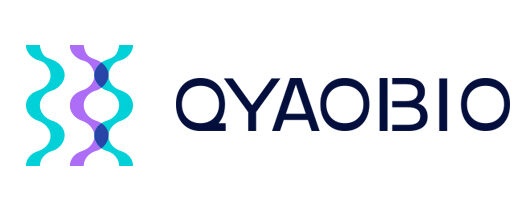Lipopeptide
Lipopeptides have a peptide backbone (amino acid chain) and a lipid tail.
Lipopeptide is a molecule class with attracting considerable attention, due to the unique properties and potential applications in various fields. These peptides have a peptide backbone (amino acid chain) and a lipid tail. The lipid tail is consisting of one or more fatty acid chains, it links to the peptide backbone through the amide bond. The combination of peptide and lipid result in the unique properties of lipopeptides.
Lipopeptides are amphiphilic molecules with liner or circle amino acids and lipid chains, where one or more amide bonds are replaced by ester bond in liner or lactone in cyclic structures. Certain lipopeptides are used as antibiotics, in reason of the strong antifungal and hemolytic activities. Lipopeptide activities link to interactions with the sterol components of plasma membrane.
QYAOBIO is the leading of custom peptide synthesis in China, we provide fast and high quality synthesis service of lipopeptide.
Lipidation
Lipidation is a peptide modification process, it adds lipid molecule to the peptide sequence. Lipopeptides are peptides after lipidation process, these peptides have particular interest for vaccine development. Because of the avoidance of toxic adjutant applications, and generation of comprehensive immune responses. The immunoadjuvant is typically applied to enhance the immune responses once synthetic peptides alone are not enough to generate.
Lipidation Synthesis Technology
In QYAOBIO, we apply different lipidation synthesis technologies to satisfy various demands of specific lipopeptides. Our common lipidation synthesis technology including:
Solid-Phase Peptide Synthesis (SPPS)
SPPS adds the protected amino acids sequentially onto a solid support, then de-protect and cleave to release the peptides. The lipid compounds are attached to peptides by coupling agents of DCC or EDC.
Liquid-Phase Peptide Synthesis (LPPS)
LPPS technology applies the protected amino acids to react with lipid compounds in liquid solution, then purify and de-protect to obtain the final lipopeptide.
Chemical Ligation
Synthesize the peptide and lipid components separately, then apply chemical ligation reactions to join them together.
Combination Methods
Depending on the distinct requirements of lipopeptides, our technical team will apply hybrid methods to finish the lipidation process. We develop the novel combination method to synthesize and purify hydrophobic peptide modifications as lipopeptides.
Classification of Lipopeptides
Lipopeptides are peptides with conjugation with lipids or long aliphatic chains, such as myristic acid, palmitic acid, prenyl groups, geranyl groups, farnesyl groups, and geranylgeranyl groups.
Farnesyl (3 isoprene units) lipid chain addition to free thiol group
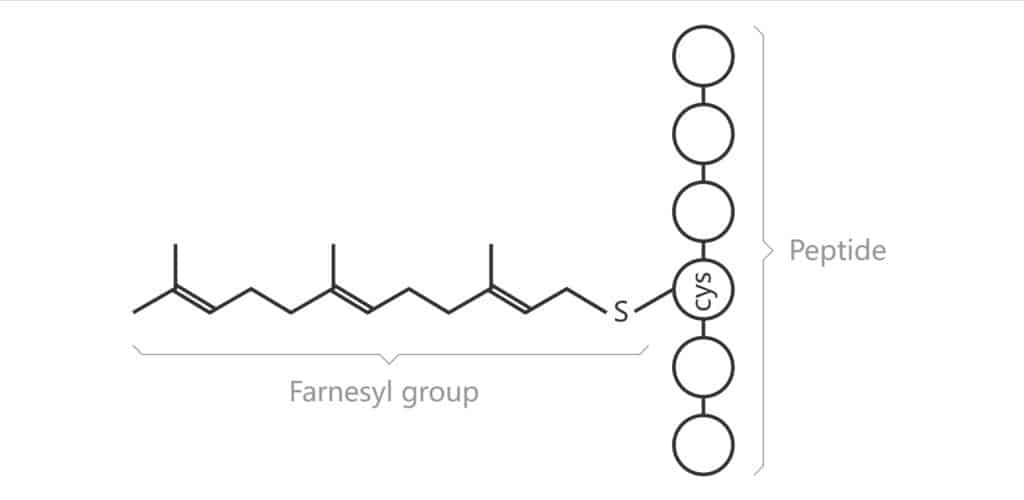
Geranyl (4 isoprene units) lipid chain addition to free thiol group
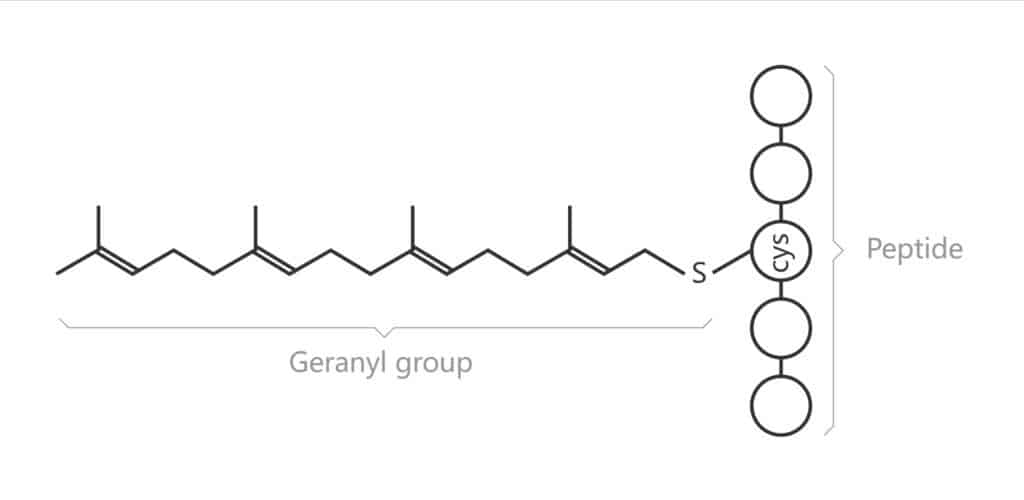
Myristoylation and palmitoylation are post translational modifications, myristoyl or palmitoyl groups are attached covalently to the aliphatic amino-groups by an amide bond. In addition, these groups are also attached to the mercaptan-groups by thiester bond.
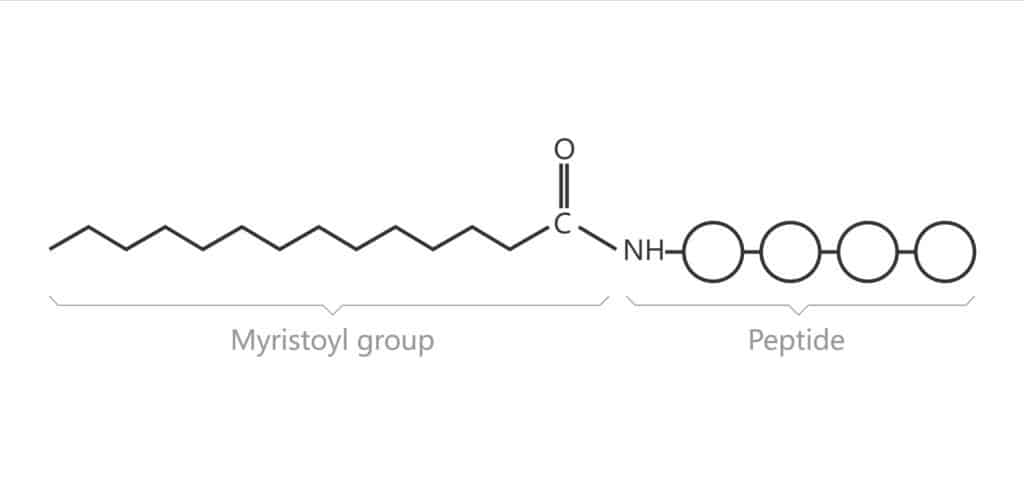
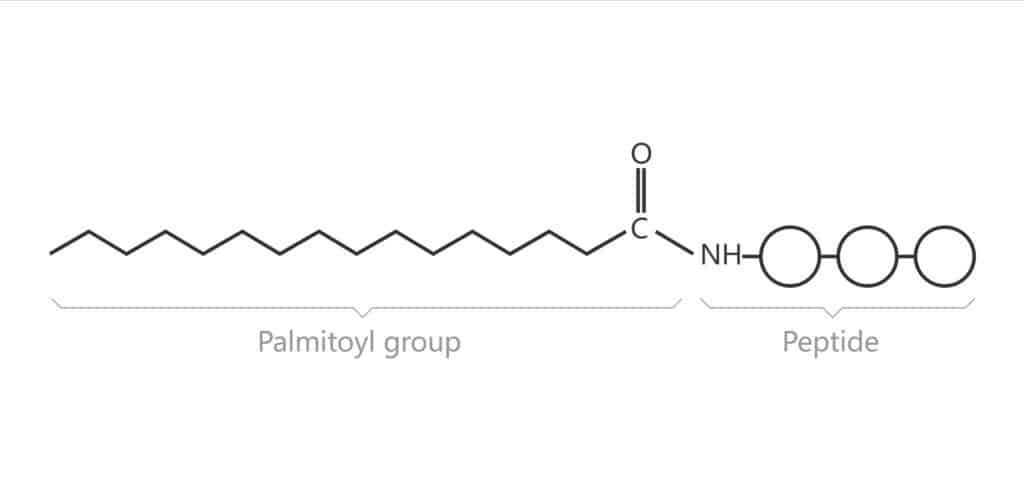
Applications of Lipopeptides
Lipopeptide is the second large group of bio-surfactant, it has action of antibacterial, antifungal, anti-viral and anti-inflammatory. Therefore, it has potential application in cosmetics and pharmaceutical formulations. Lipopeptides have wide application in pharmaceutical research with several biological activities, such as cellular uptake, immune function, drug delivery, membrane targeting and localization etc.
- Function of cellular mechanism and signal transduction
- Antimicrobial or antifungal properties
- Protein-protein interactions
- Protein-lipid interactions
- Membrane targeting and localization
- Cell permeability
Regardless the applications in pharmaceutical research, lipopeptides are also used in other industries:
- Cosmetic industry: Lipopeptides have anti-aging properties, these peptides can improve skin elasticity, reduce wrinkle appearance, and enhance skin hydration. Lipopeptides are used in various cosmetic and skincare products.
- Food industry: Lipopeptides are the common food preservatives and food additives.
- Bio-remediation: Lipopeptides can break down hydrophobic compounds and solubilize contaminants, in order to treat contaminated soils and water.
Lipopeptides have properties of surfactant, antibacterial, antifungal, insecticidal or haemolytic with lower toxicity risk and allergy problems. These peptides attract considerable interest from different industries, and could be the sources of novel antibiotics.
Custom Lipopeptide Service
QYAOBIO provides efficient and high quality custom lipopeptide synthesis service for customers in worldwide. In order to satisfy various requirements in research and study.
Call Us
+86(021)-50795728
+86(027)-60707970
